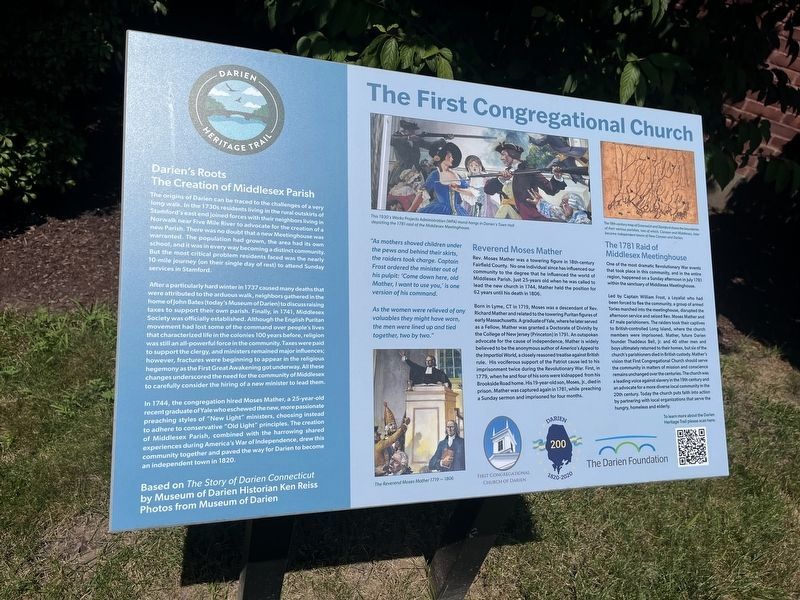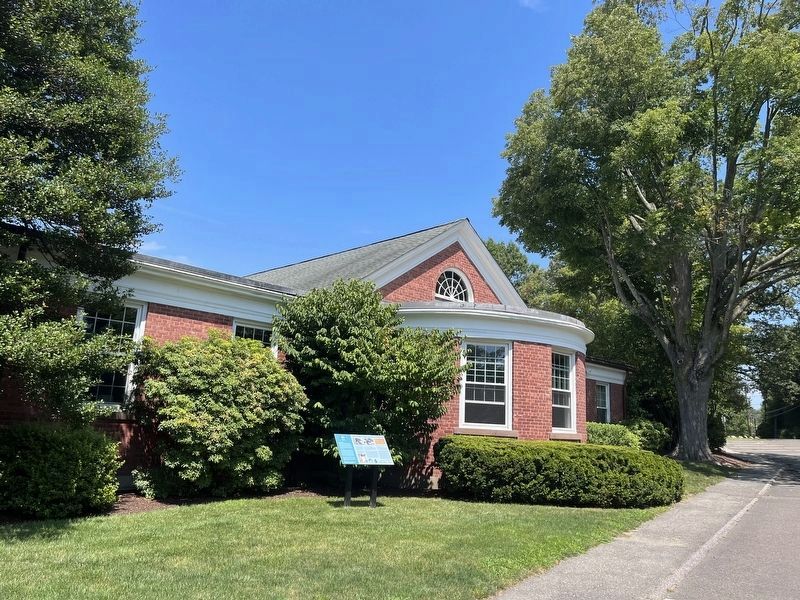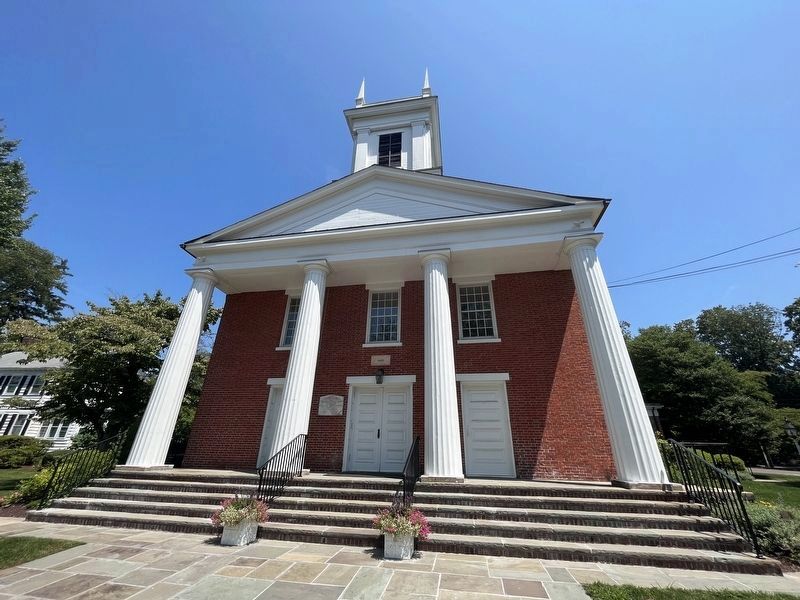Darien in Fairfield County, Connecticut — The American Northeast (New England)
The First Congregational Church
Darien Heritage Trail
Darien's Roots
The Creation of Middlesex Parish
The origins of Darien can be traced to the challenges of a very long walk. In the 1730s residents living in the rural outskirts of Stamford's east end joined forces with their neighbors living in Norwalk near Five Mile River to advocate for the creation of a new Parish. There was no doubt that a new Meetinghouse was warranted. The population had grown, the area had its own school, and it was in every way becoming a distinct community. But the most critical problem residents faced was the nearly 10-mile journey (on their single day of rest) to attend Sunday services in Stamford.
After a particularly hard winter in 1737 caused many deaths that were attributed to the arduous walk, neighbors gathered in the home of John Bates (today's Museum of Darien) to discuss raising taxes to support their own parish. Finally, in 1741, Middlesex Society was officially established. Although the English Puritan movement had lost some of the command over people's lives that characterized life in the colonies 100 years before, religion was still an all-powerful force in the community. Taxes were paid to support the clergy, and ministers remained major influences; however, fractures were beginning to appear in the religious hegemony as the First Great Awakening got underway. All these changes underscored the need for the community of Middlesex to carefully consider the hiring of a new minister to lead them.
In 1744, the congregation hired Moses Mather, a 25-year-old recent graduate of Yale who eschewed the new, more passionate preaching styles of "New Light" ministers, choosing to adhere to conservative "Old Light" principles. The creation of Middlesex Parish, combined with the harrowing shared experiences during America's War of Independence, drew this community together and paved the way for Darien to become an independent town in 1820.
Based on The Story of Darien Connecticut by Museum of Darien Historian Ken Reiss
Photos from Museum of Darien
"As mothers shoved their children under the pews and behind their skirts, the raiders took charge. Captain Frost ordered the minister out of his pulpit: 'Come down here, old Mather, I want to use you,' is one version of his command.
As the women were relieved of any valuables they might have worn, the men were lined up and tied together, two by two."
Reverend Moses Mather
Rev. Moses Mather was a towering figure in 18th-century Fairfield County. No one individual since has influenced our community to the degree that he influenced the world of Middlesex Parish. Just 25-years old when he was called
Born in Lyme, CT in 1719, Moses was a descendant of Rev. Richard Mather and related to the towering Puritan figures of early Massachusetts. A graduate of Yale, where he later served as a Fellow, Mather was granted a Doctorate of Divinity by the College of New Jersey (Princeton) in 1791. An outspoken advocate for the cause of Independence, Mather is widely believed to be the anonymous author of America's Appeal to the Impartial World, a closely reasoned treatise against British rule. His vociferous support of the Patriot cause led to his imprisonment twice during the Revolutionary War. First, in 1779, when he and his four sons were kidnapped from his Brookside Road home. His 19-year-old son, Moses, Jr., died in prison. Mather was captured again in 1781, while preaching a Sunday sermon and imprisoned for four months.
Middlesex Meetinghouse
One of the most dramatic Revolutionary War events that took place in this community, and in the entire region, happened on a Sunday afternoon in July 1781 within the sanctuary of Middlesex Meetinghouse.
Led by Captain William Frost, a Loyalist who had been forced to flee the community, a group of armed Tories marched into the meetinghouse, disrupted the afternoon service and seized Rev. Moses Mather
[Captions:]
This 1930's Works Progress Administration (WPA) mural hangs in Darien's Town Hall depicting the 1781 raid of the Middlesex Meetinghouse.
The 18th-century map of Greenwich and Stamford shows the boundaries of their various parishes, two of which, Canaan and Middlesex, later became independent towns of New Canaan and Darien.
Erected by First Congregational Church of Darien; Town of Darien; The Darien Foundation.
Topics. This historical marker is listed in these topic lists: Churches & Religion • Colonial Era • Law Enforcement • War, US Revolutionary. A significant historical year for this entry is 1737.
Location. 41° 4.881′ N, 73° 27.877′ W. Marker is in Darien, Connecticut, in Fairfield County. Marker is on Old Kings Highway North just east of Brookside Road, on the right when traveling west. Touch for map. Marker is at or near this postal address: 14 Brookside Rd, Darien CT 06820, United States of America. Touch for directions.
Other nearby markers. At least 8 other markers are within 2 miles of this marker, measured as the crow flies. Middlesex Graveyard (within shouting distance of this marker); Rev. Dr. Moses Mather (within shouting distance of this marker); Museum of Darien (about 500 feet away, measured in a direct line); Spring Grove Cemetery Veterans Memorial (approx. 1.2 miles away); Oscar E. Peck (approx. 1.2 miles away); Rowayton Veterans Memorial (approx. 1.4 miles away); Darien Civil War and World War I Memorial (approx. 1˝ miles away); Darien World War II Memorial (approx. 1˝ miles away). Touch for a list and map of all markers in Darien.
Credits. This page was last revised on March 27, 2024. It was originally submitted on August 17, 2023, by Devry Becker Jones of Washington, District of Columbia. This page has been viewed 79 times since then and 22 times this year. Photos: 1, 2, 3. submitted on August 17, 2023, by Devry Becker Jones of Washington, District of Columbia.


